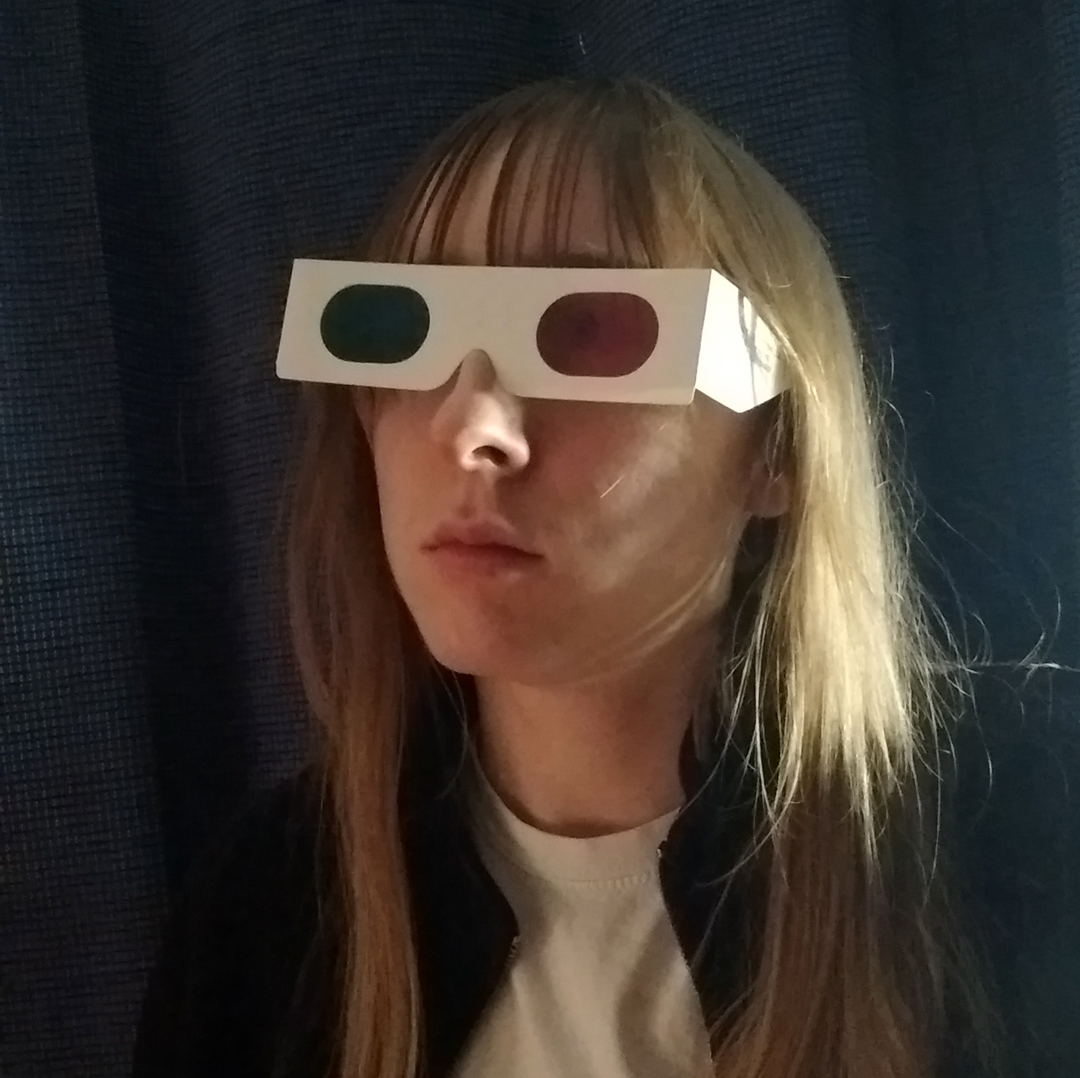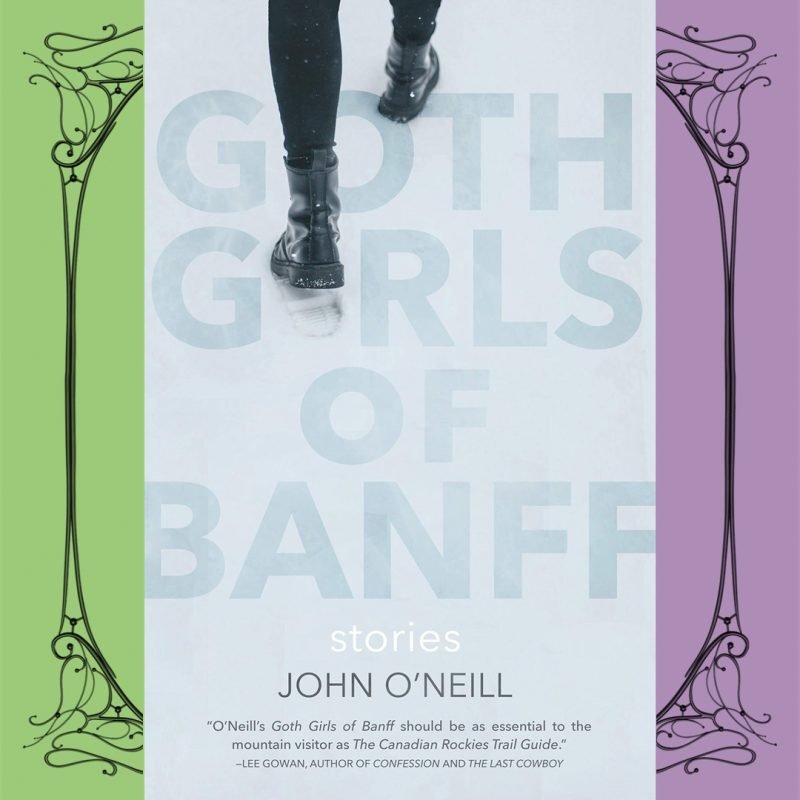USEREVIEW 088: A Darker View of Western Canada
Reviewer Katharine Mussellam shows us the sights of John O’Neill‘s short story collection Goth Girls of Banff (NeWest Press, 2020) in this thrill ride of an experimental review.
ISBN 978-1-98873-295-4 | 208 pp | $19.95 CAD — BUY Here
#CAROUSELreviews
#USEREVIEWEDNESDAY
As I got off the plane in Alberta on my way to my first tour with John O’Neill Travel, I knew it would be unlike any other I have been on. We are all familiar with the typical advertisements for Canada’s western provinces that encourage us to take a break and enjoy nature, calm and carefree. But if you are tired of that typical way of travelling, John O’Neill Travel’s new Goth Girls of Banff tour packages were created with someone like you in mind.
Their ten different tours promise to allow you to explore the landscape — as well as your senses of identity, mortality and animal nature — in ways you might not have dared to do before. Each guide leads you through different locales while telling you a quirky but grim story from their life. These tours are not for everyone, and if you are looking for a simple, fun trip, then I would not recommend these tours. But if an off-kilter sense of adventure is a trait you possess, then they may be just what you want. Below is a taste of what’s in store for the traveller who dares to step into the company’s new way of seeing the world.
What Is Written Tour
This is the best one to start with, as it is one of the easier-to-follow excursions. On this tour, Don will help you rediscover the joys of riding in the back seat on a family road trip. It allows you to delight in the ways that road trips often do not always go quite as smoothly as one hopes, but that unexpected moments yield a different kind of fun that you will remember for the rest of your life — whether that life is short or long.
I enjoyed the way the guide pointed out topographical features as we passed them, describing how the mountains “look like clouds. Hard to believe they’re even real” and: “[r]anchland creasing into hills.” The panorama viewed through the car window may make you feel nostalgic and rekindle the childhood imagination you thought you had lost. However, this tour also includes a life-changing meeting between humans and nature that, historically, not everyone survives, but will lead to contemplation of life’s happenstance and the way people are bound together by memory.
Athabasca Tour
Athabasca is for those who would like to understand the “pinched life of chronic pain,” as the guide, Karen, described it to me. Karen recounted her physical pain as well as her emotional pain as she discussed her strained relationships, as part of her story about the landscape in this part of the country and people who inhabit it. She brought us face-to-face, unflinchingly,into a world where someone experiences migraines, their “synapses blazing in the aching skull of the sky.” As you walk alongside this guide and start to feel as if you have walked in her shoes, you will contemplate how her physical pain and challenging relationships have left her disillusioned.
You will also come to see the city of Calgary as a “two-bit cowboy-dumb wild west town” and when you head into the glaciers you will be led through a perspective where you see “[n]othing new, even in this mountain place.” You will understand how these places lose their lustre when one’s world does not have much of a lustre itself to begin with, as well as the superficiality of how travel destinations are sold to us tourists. At the end of the tour, you will find yourself in danger, then watch your guide somehow find calm in the truly macabre. You may find something interesting to contemplate in this oddly quiet moment, but there is also a good chance you will find the unknowable aspect of this conclusion anticlimactic, the calmness of your tour guide aggravating.
Rudy Tour
Your guide, Rudy, takes you with him to a lodge in the mountains to encounter and explore the animalistic elements of human behaviour. The lodge is decorated with the heads of animals that once lived and is populated by live humans. This tour plays with your expectations of the sounds one expects to hear in the night (nocturnal animals in the woods) and the sounds one does not (humans in the lodge who think nobody can hear them in bed). As Rudy leads you farther and farther away from what is considered acceptable behaviour, but maintains a desire to find some sort of understanding and connectedness with the world and others, you will be forced to consider ways in which your own desires may be considered unpleasant or even animalistic. You will consider the freedom of accepting one’s body, in its hairiness, “burliness,” or “stumpy” shape, as Rudy tries to do for himself.
The challenge in this tour is to find a way to surrender to feelings and thoughts that are difficult to express in coherent words, but if you can lie in this discomfort, you may learn new things about yourself, your thoughts and your desires. It is difficult to comprehend some of the events you hear about and witness on this tour, so if you like to find clear reasons and meanings for events and others’ actions, then this tour might not be for you. But this lack of one single clear takeaway lets you think for yourself, too.
Natural Selection Tour
This tour also plays with accepted or typical perceptions of the world, including animals. It takes you places where you will encounter a candelabrum that resembles a cage made of antlers, fossil-like forehead creases, snoring that sounds like the cries of a sandhill crane and a person dressed in clothes that my guide described as “scalding as tea.” These intersections between the human and the animal, as well as clashes of the senses, culminate in an encounter with a moose family. Our guide, Mark, related the behaviour of the mother moose we saw to his own relationship with his family. His words invited me to consider whether I have the right priorities when it comes to my approach to life and family.
However, I began to wonder, for all that this company’s new tours do to consider the ways that animals and people are similar, if this tour in particular relies a little too heavily on anthropomorphism in its approach to the sights. Should we really be thinking about animals and their motivations as if they were similar to our own? Or does that simply distance us farther from them?
Goth Girls of Banff Tour
The company’s signature tour brings many elements of the company’s other tours together, with comparisons between humans and nature connecting to a meditation on identity. As our guides, goth sisters Linda and Jessie, say, this is for those who are “tired of silly Tilley hats and Gore-Tex,” familiar garments worn by many visitors of Banff. These goth women promise “no touchy-feely” and “no fiddly long-term relationships” to those they serve with their spooky style of escorting. Yet I learned that there were feelings of loneliness beneath Linda’s detached persona, loneliness that is always more than what meets the eye: “a whole mountain range” of feelings and experiences that you see as you walk the mountain trails of Banff National Park.
As you watch these sisters describe how they have explored the limits of what they can exploit in their performances for others, and where they reach the point of feeling remorse, you see how artifice can help one find authenticity. What was pushed too far,causing a “chink in” Linda’s “goth armour” and a rift with her sister? Take the full tour to find out, but don’t be surprised if by the end you too are left wondering what it means to be a “better goth” than someone else, literally or figuratively. And ask yourself: what roles are you playing? Are they true to what you wish for?
The Book About the Bear Tour
Another one of the company’s best, this tour takes you behind the scenes of what happens after the most tragic of animal encounters with humans: those that result in the death of an animal. See firsthand what this “animal version of CSI” entails as you follow your guide through autopsies of bears post-attack. This look inside a profession that is not well-known will lead you through meditations on what these bear attacks say about human and animal behaviours. My guide provided a good argument for why people who get attacked by bears often deserve the harm they endure because of how they treated the animals in the first place. He also explained why human behaviour can be a lot more unpredictable than animals’.
This will likely feel very familiar for the anxious and neurodivergent, and rings true in the subsequent stops on the tour. You will discover how to be willing to embrace the unexpected, whatever your predispositions are towards it. Unlike so many of the other O’Neill tours, this one will leave you feeling hopeful about people’s capability to treat each other with compassion. If you liked the darkness and confusion of the other tours, it may feel too conventional, but it may do just the trick if the other tours seem not quite right for you.
After sampling these tours, which vary in length and difficulty, I can say that, overall, they are best for the more experienced traveller and those with a tough constitution. This is especially true for the longer tours, such as the historical From Castle Mountain Tour. For those who have gone on prior tours with the company, such as the Paisley Black, Last Will and So Forth Tour, you may find the tone and overall mood of your guides a bit jarring, since some of these tours are a much harsher experience. If you enjoyed the personal approach to history from some of their older tours, such as The Photographer of Wolves Tour, then there are new ways of exploring similar terrain here.
While the Goth Girls tours are a bit more difficult, there are still things to be learned, though what is meant to be learned is not always as obvious in some tours as in others. The guides employed for these tours can act rather strangely and be cryptic in their choice of words. I presume this is intentional.


